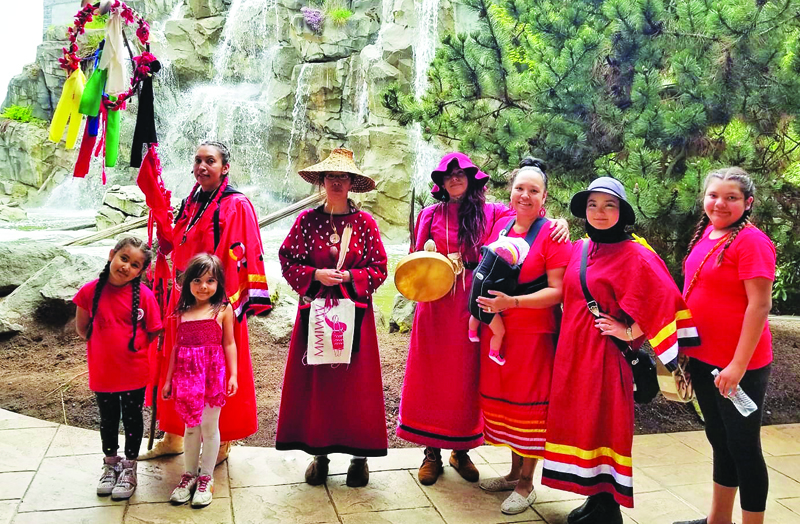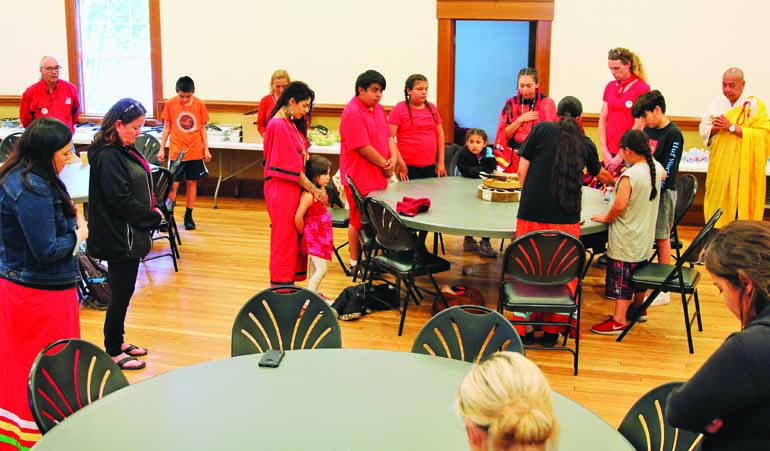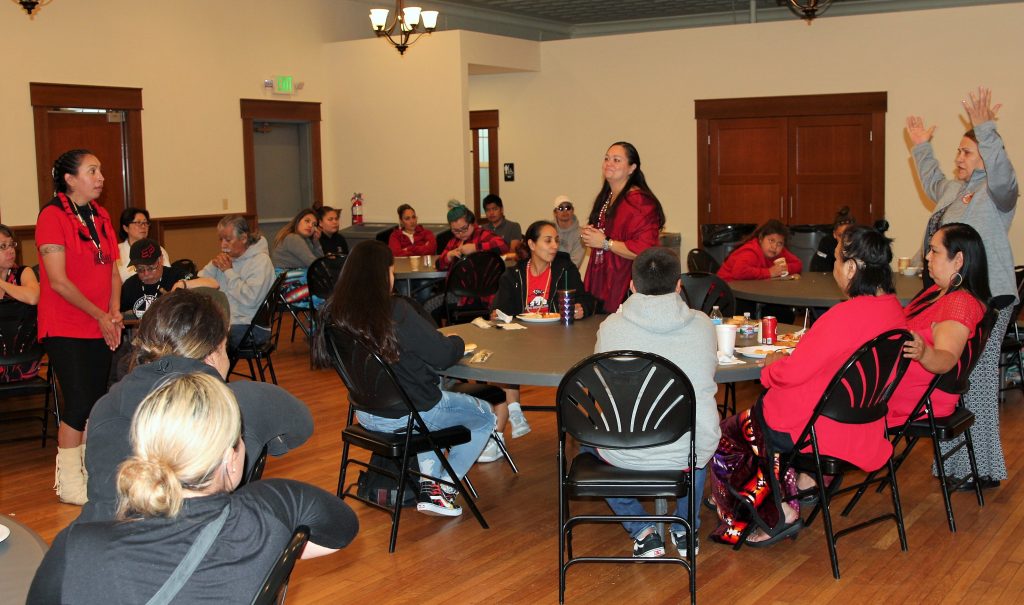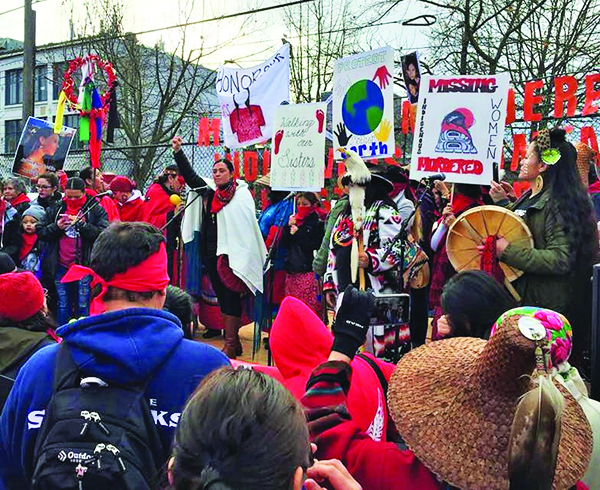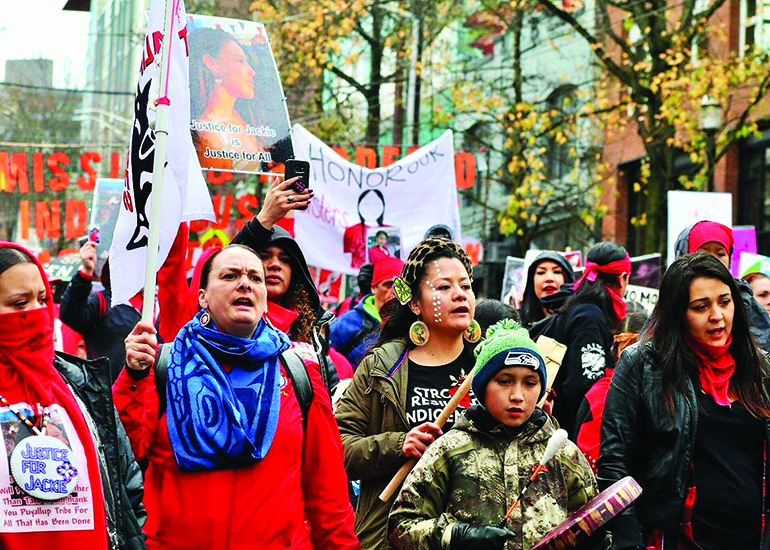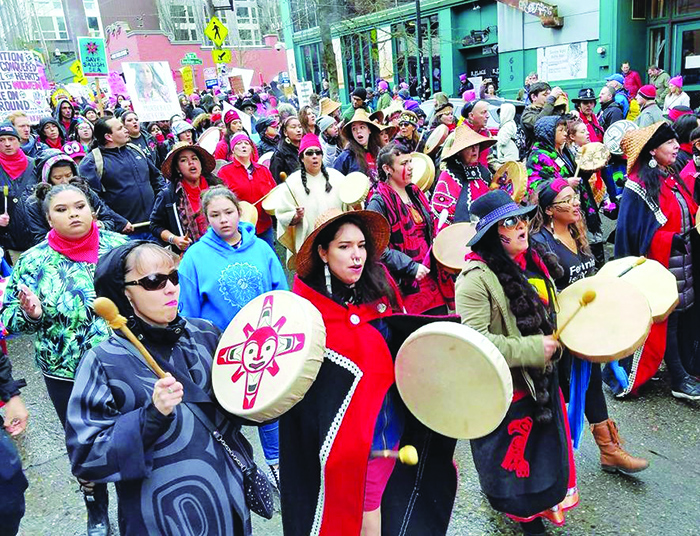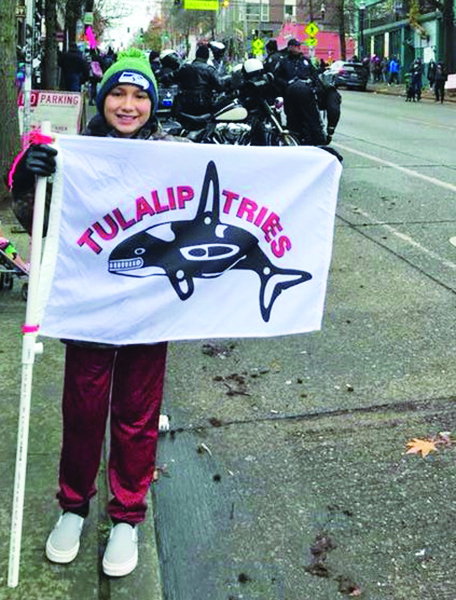By Kalvin Valdillez, Tulalip News
During the final months of 2017, Washington State Republican Representative, Gina Mosbrucker, of the 14th Legislative District chose a DVD rental from Redbox one evening for a relaxing movie night. Had she picked a comedy or romance she may have missed her calling, but she decided on a film titled Wind River and was taken on an emotional journey into the world that is unfortunately a haunting reality for many Indigenous families across the country, and even a bigger issue in Canada.
The powerful movie follows a professional tracker and an FBI agent throughout the Wind River reservation in Wyoming as they try to uncover a crime when a young, missing Indigenous girl’s body is found dead on the reservation. The film gives insight to the epidemic that is taking away our mothers, sisters, aunties and cousins and how jurisdiction, lack of resources and underreporting causes many missing and murdered Indigenous Women (MMIW) cases to go unresolved.
The end of Wind River concluded with a message that shook Rep. Mosbrucker to her core. It read, ‘While missing person statistics are compiled for every other demographic, none exist for Native American women.’ With that statistic on her mind, she began to conduct her own research and found that was indeed true and felt the strong urge to help. A short time after watching the movie and learning about MMIW, Gina was at her office at the Washington State Capital on the morning of January 20, when hundreds of Indigenous activists marched on the Capital to bring awareness to the epidemic.
“There are things in life that keep coming back to your mind over and over and you know you need to work on it,” says Representative Mosbrucker. “For me, this is my calling. There were repeated messages to me from the movie Wind River and the message at the end of the movie is not acceptable. After further research I found that was true and I also had a tribal girlfriend from high school call me up and she told me I have to fix this. I think the final straw was the large group of Native Americans who were in full tribal dress with drums in the middle of the Capital. Afterwards, I was in my office working late and I couldn’t get it out of my head and I said, I’m called to do this work. Senator McCoy’s staff was nice enough to introduce me to a tribal member who happened to be in his office that night. She came to my office and shared her story. We spent an hour discussing the challenges, how she’s been trying for a decade to get help.”
She began working immediately and wrote HB2951, getting the bill approved days after the MMIW March on the Capital and pulling in tribal citizens at the last minute to share their testimonies of lost loved ones. The bill went through the long process of becoming law, reaching the senate floor where it was nearly passed unanimously and shortly after, Washington State Governor Jay Inslee signed the document, making the bill law back in June. HB2951 is essentially a study that requires Washington State Patrol to work with local tribes and tribal law enforcement to increase resources for reporting and identifying MMIW.
The first phase of this study was initiated on September 27 at the Tulalip Administration building during the Washington State Patrol Tribal Community Outreach Tour. State Patrol officers, Washington State legislators and the Indigenous community of Tulalip met to discuss HB2951 and determine ways to help find MMIW and put an end to the heart wrenching epidemic.
“I am a Tulalip member so this is an important subject for us and we need to get to some resolution,” said Washington State Senator John McCoy. “Under the federal law VAWA (Violence Against Women Act), Tulalip are one of the three tribes that are part of that pilot project so we have the resources to help make this happen. It’s time to gather information and get something done.”
For three hours the committee spoke to the community about MMIW and HB2951 as well as ongoing cases that are happening now in Indian Country. Citizens learned that nearly 90% of Indigenous women have experienced some sort of abuse in their lifetime, whether it was verbal, mental or physical. Another shocking statistic conducted by the Centers for Disease Control (CDC) showed that over half of the Native American population of women have been sexually abused, and out of those cases, over 70% claimed the offense was committed by a non-tribal member. On many reservations, the chances of a women experiencing abuse are significantly higher, around 10%, than the national average.
The group also brainstormed ideas on how to get all tribes on board to help find these missing cases around Washington. A problem the committee has run into is tribal cooperation from family members, board members and law enforcement. Due to a variety of cultural reasons and perhaps lack of trust, tribes are opting to handle missing cases on their own, unless the case is ruled a homicide in which the FBI takes over. The groups current goal is to present an estimated number of Washington MMIW to the state by June 2019.
Tribes are also limited in resources as well as access to the National Crime Information Center (NCIC), the FBI’s database, which includes records of missing persons. Many times a missing person case will not be entered into NCIC due to limited access and the fact the person is over eighteen. Many people aren’t flagged as missing because adults often take solo journeys to escape the everyday grind and there is no evidence of foul play.
“I wanted to share some current information about NCIC in Washington State,” says Washington State Patrol Missing and Unidentified Persons Unit Manager, Carri Gordon. “Right now we have 1,841 missing person records active records in Washington. Of those 1,841 about 90% of those missing persons are runaway youth who run and return. Of those 1,841, 98 of those records were coded ethnicity-wise as being Native American. That’s assuming that the ethnicity was reported correctly and entered correctly.”
Carri went on to explain that investigators are not required to indicate the victims race and more than not investigators confuse Indian Americans for Native Americans, so the number of missing Indigenous women in Washington maybe a lot higher than the 98 reported in the NCIC. If this is true in the State of Washington, thousands of cases could be very well underreported nationwide.
In 2015, Canada conducted a similar study and were able to close many cases but hundreds of women are still missing and hundreds of murders are still unsolved. Canada believes that their true number of MMIW cases are over 4,000 and experts believe the United States is close behind, ranging between 1,000-4,000 cases nationwide.
“This series is the first step to make sure we’re reaching out to each tribe individually or whichever way is most respectful,” says Mosbrucker. “Whether it’s a group convening or individually, we’re willing to do whatever that work is to report back a number to Washington State. I can’t fix congress, I can’t fix this issue nationally, but I can get us a number in Washington State that will serve as a model to fix it across congress and throughout the nation.”
The Washington State Patrol Tribal Community Outreach Tour will continue over the course of the next few months with the next meetings at the Snoqualmie Casino on October 15, Yakama Convention Center on October 29, and Little Creek Casino on November 8. For more information and to view HB2951 please visit www.leg.wa.gov
